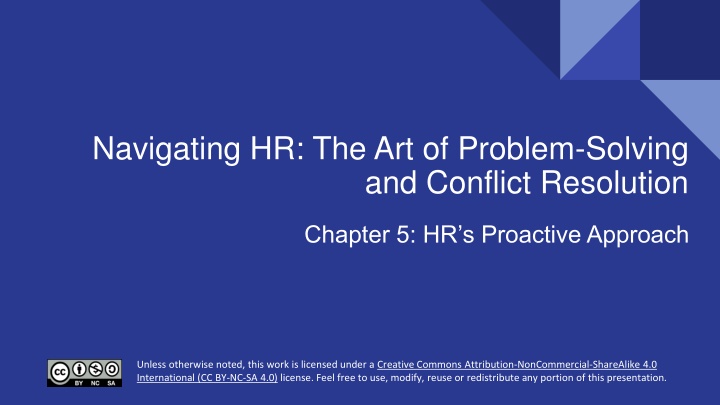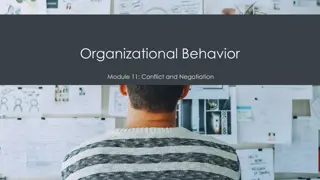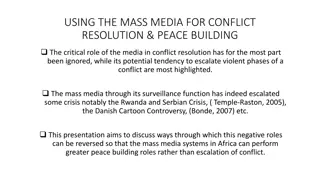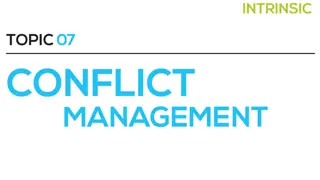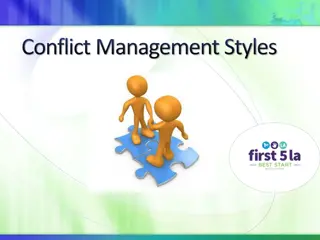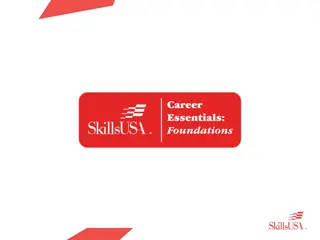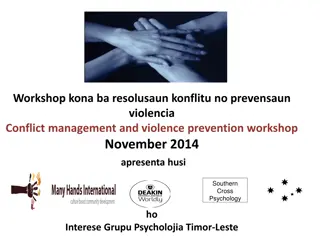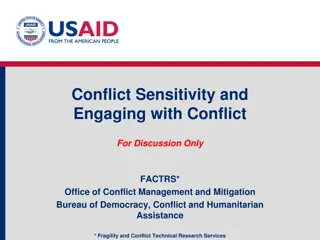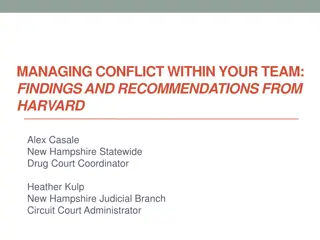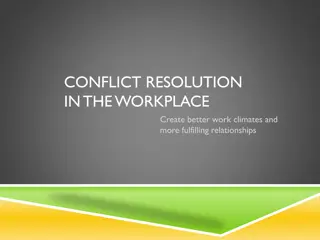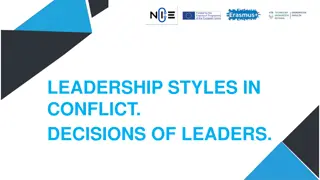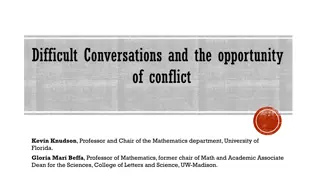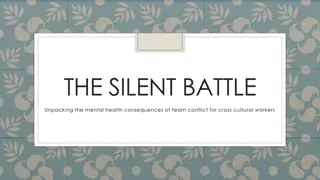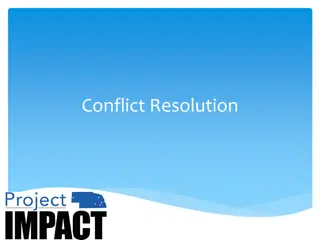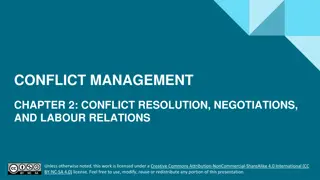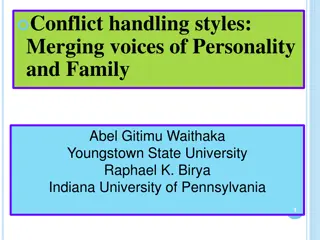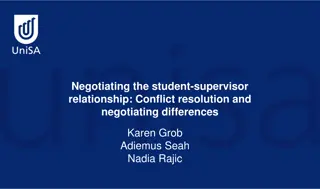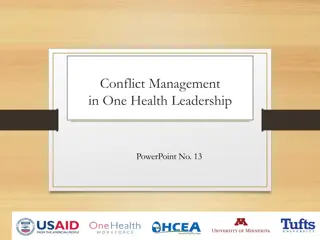HR's Proactive Conflict Resolution Strategies
Dive into Chapter 5 of "Navigating HR: The Art of Problem-Solving and Conflict Resolution" to explore proactive techniques for preventing negative workplace conflict, the benefits of a proactive approach, and the application of positive influencing skills in conflict scenarios. Learn about implementing comprehensive training programs, setting clear expectations, fostering open communication, maintaining updated policies, developing disciplinary programs, leading by example, organizing team-building activities, providing timely feedback, promoting a positive workplace culture, defining roles clearly, and utilizing influence effectively in conflict resolution.
Download Presentation

Please find below an Image/Link to download the presentation.
The content on the website is provided AS IS for your information and personal use only. It may not be sold, licensed, or shared on other websites without obtaining consent from the author.If you encounter any issues during the download, it is possible that the publisher has removed the file from their server.
You are allowed to download the files provided on this website for personal or commercial use, subject to the condition that they are used lawfully. All files are the property of their respective owners.
The content on the website is provided AS IS for your information and personal use only. It may not be sold, licensed, or shared on other websites without obtaining consent from the author.
E N D
Presentation Transcript
Navigating HR: The Art of Problem-Solving and Conflict Resolution Chapter 5: HR s Proactive Approach Creative Commons Attribution-NonCommercial-ShareAlike 4.0 International (CC BY-NC-SA 4.0) Creative Commons Attribution-NonCommercial-ShareAlike 4.0 International (CC BY-NC-SA 4.0) Unless otherwise noted, this work is licensed under a Creative Commons Attribution-NonCommercial-ShareAlike 4.0 International (CC BY-NC-SA 4.0) license. Feel free to use, modify, reuse or redistribute any portion of this presentation.
5.0 Learning Outcomes In this chapter, we will: Examine proactive techniques to prevent negative workplace conflict List the benefits of a proactive approach to conflict Apply positive influencing skills to a workplace conflict scenario
5.2 The Lesson: A Proactive Approach to Conflict Training: Implement a comprehensive training program covering legal requirements and company policies. Set Clear Expectations: Clearly communicate expectations for meetings, projects, and business trips. Open Communication: Regularly update teams on business and departmental goals through meetings and electronic updates. Policies and Procedures: Keep organizational policies and procedures up-to- date and easily accessible. Progressive Disciplinary Program: Develop and train employees on a progressive disciplinary program, and enforce it as needed.
5.2 A Proactive Approach to Conflict (continued) Lead by Example: Leaders should model the behavior they expect from others. Team Building Activities: Organize cost- effective activities to foster employee connections. Provide Timely Feedback: Address issues and provide feedback promptly, not just during annual reviews. Positive Workplace Culture: Implement a mentorship program to help new hires integrate into the company culture. Clear Definition of Roles: Regularly update job descriptions to ensure they are accurate and current. Prevent Unhealthy Workplace Conflict by Connie Palmer CC BY-NC-SA
5.3 Spotlight: Influence Influence is the ability to share helpful suggestions that will assist the other person in resolving their conflict. Power and Influence: HR professionals use influence to make helpful suggestions, not to exert control over others. Steven Lukes (2005) developed a framework that identified three dimensions of power: The first two dimensions consider power as it pertains to conflicting interests between parties. The third dimension explores how those with power can avoid clashes of interests by shaping others wants and desires. Fourth dimension: power as a web of relations that provides the scaffolding of societies.
5.3 Power and Influence One-dimensional: The ability to get someone to do what you want in direct, observable conflicts. Two-dimensional: Involves suppressing conflict by limiting what is debated, using methods like coercion, influence, authority, force, and manipulation. Coercion: You secure the compliance of others through threats of deprivation. Influence: You secure the compliance of others without resorting to threats. Instead, you convince others to comply through various means. Authority: Others comply with you because they recognize your authority. Force: You secure the compliance of others by stripping them of the choice of non- compliance. Manipulation: You secure others compliance without their awareness. Three-dimensional: Shapes perceptions and preferences, making compliance seem natural and avoiding conflict altogether.
5.3 How to Positively Influence Others Step 1 Actively listen to the other person, repeating your understanding of their message to confirm you've captured it correctly. Step 2 After clarifying the message, ask if you can share a suggestion, ensuring they are open to your input. Step 3 With permission, offer a helpful suggestion framed with understanding and end with a question to see if it fits their situation. Step 4 Allow the person to ask questions, helping them adapt the suggestion to their specific needs or circumstances. Step 5 Support their modified plan and offer to follow up later to check on progress and provide further encouragement.
5.6 Key Takeaways It is essential to provide employees with a workplace that values differences in opinion but does not encourage negative conflict. Providing employees with clear policies, procedures and expectations helps minimize workplace conflict Following through on unwanted behaviour, up to and including disciplinary action, reinforces that negative workplace conflict will not be tolerated. Influencing others does not have to involve power-based behaviour Positive influence includes suggestions that are meant to assist the other person to solve their problem or resolve their conflict Influence consists of asking permission of the other person to share your thoughts and ideas
